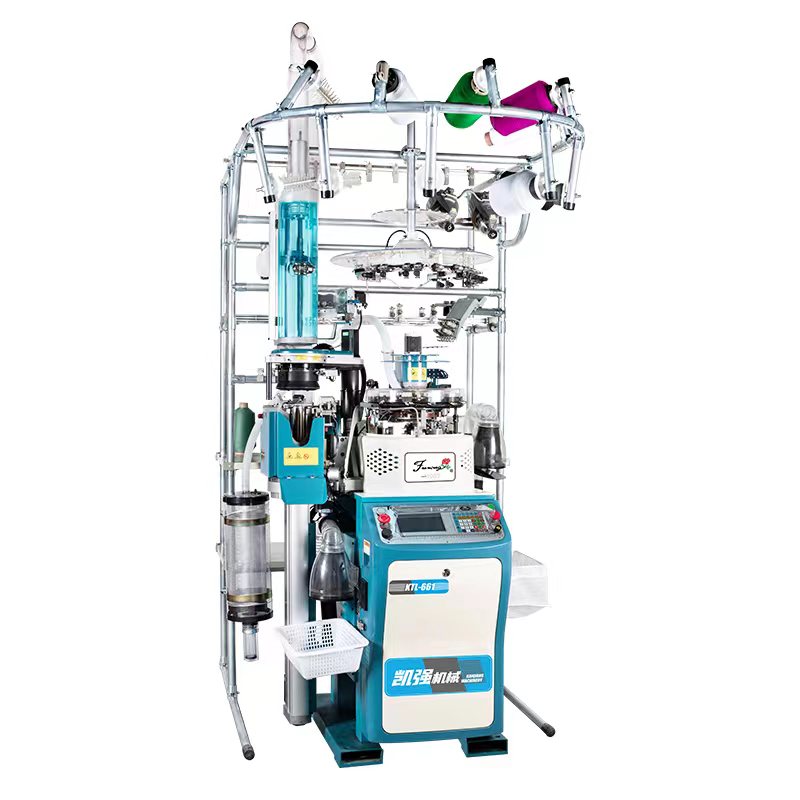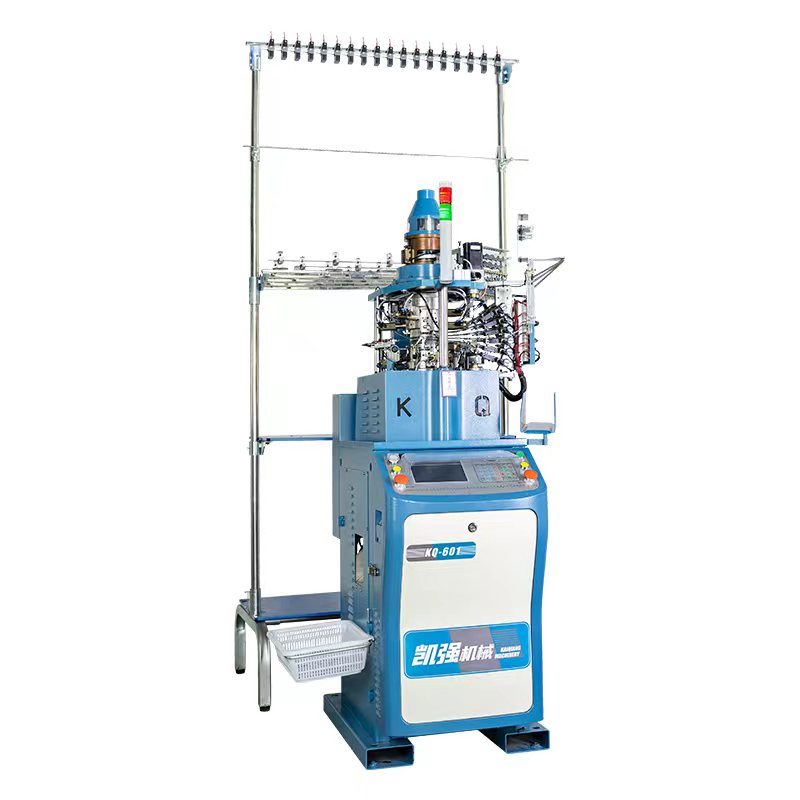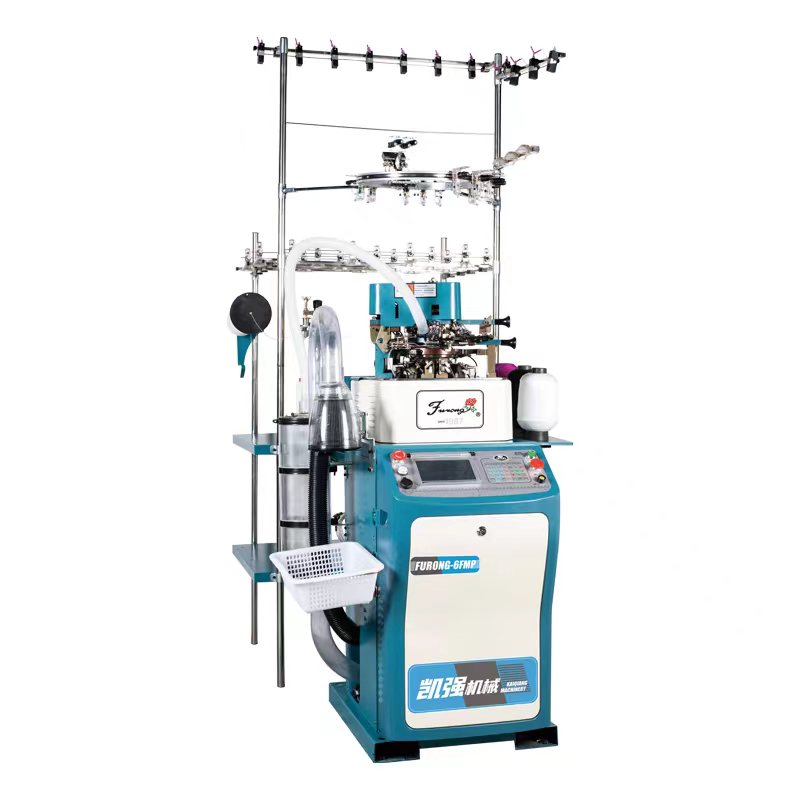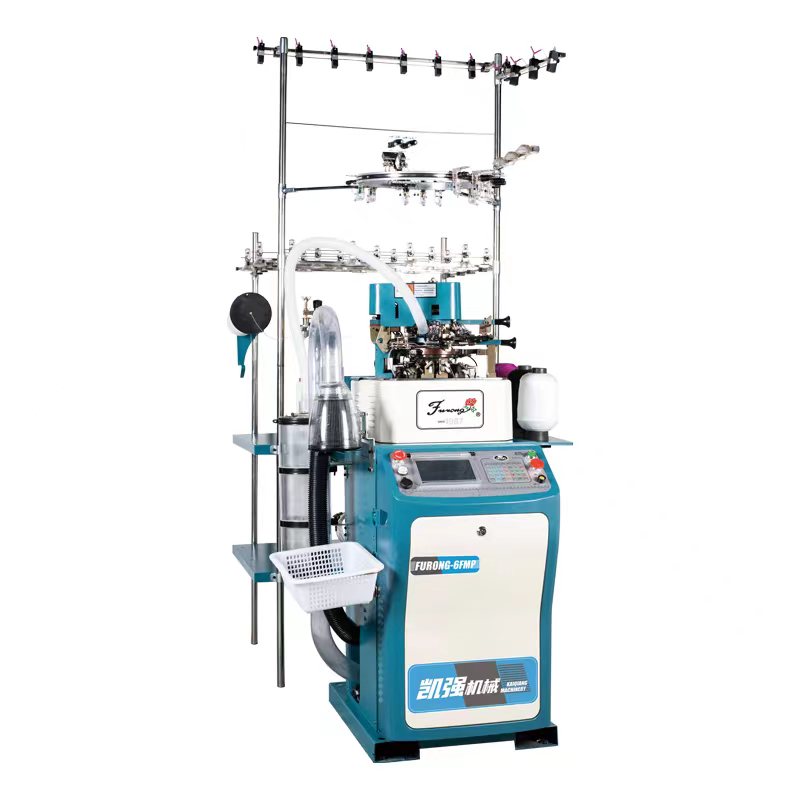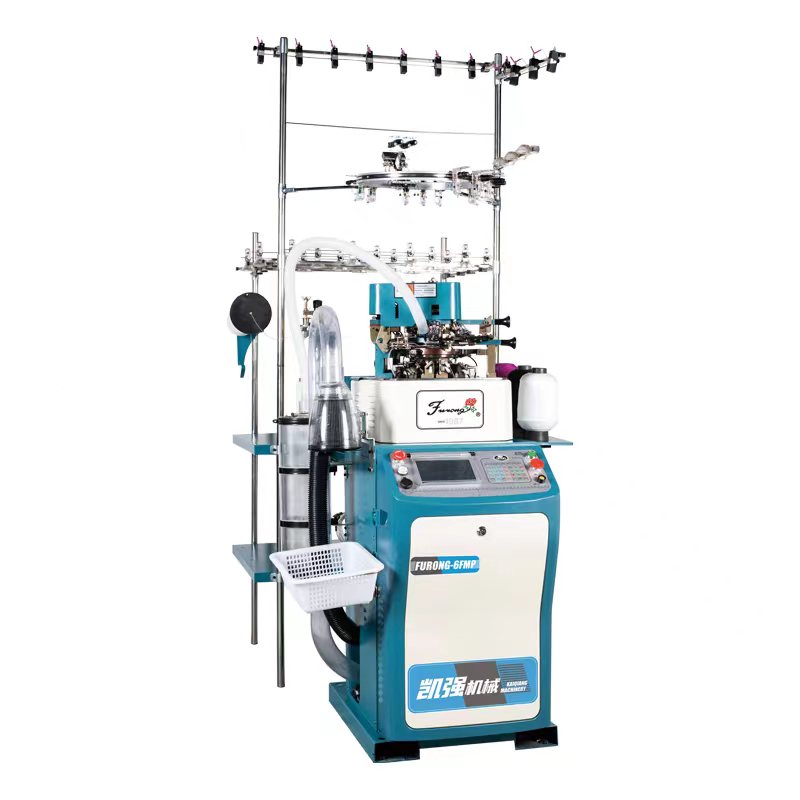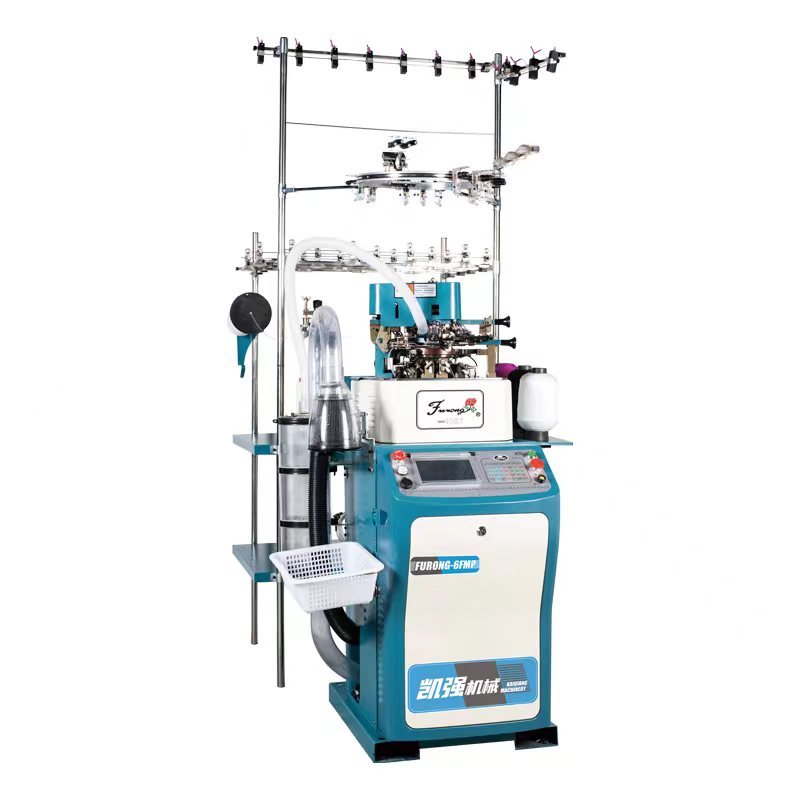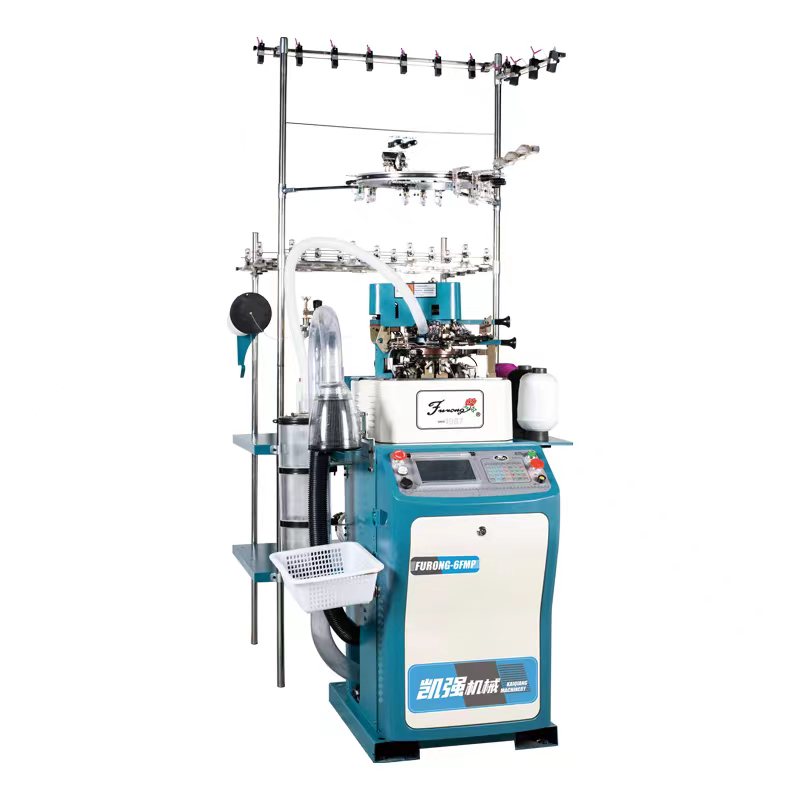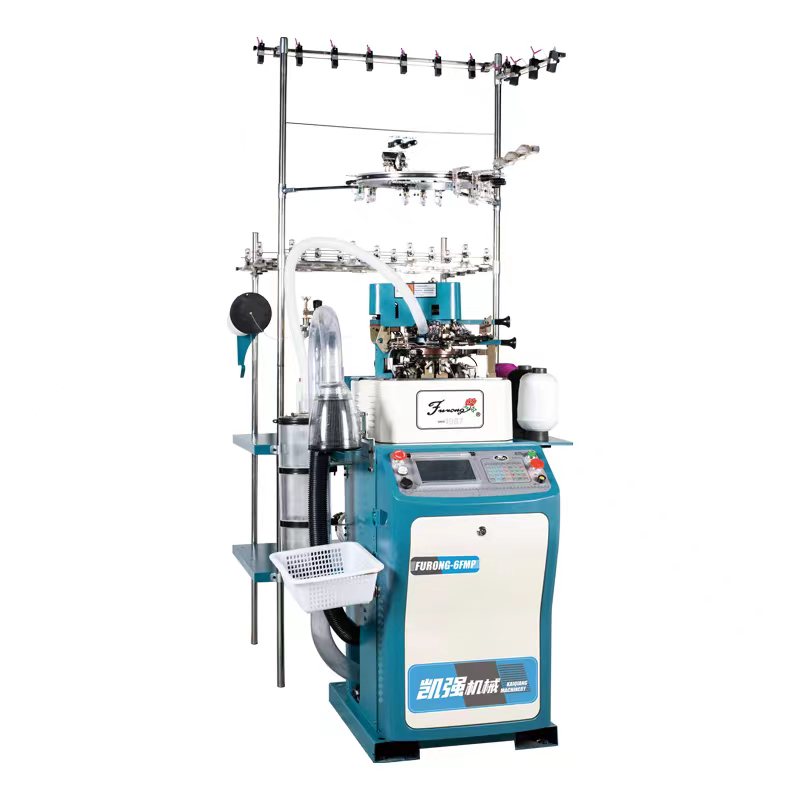The principles of operation and mechanics in sock shoe knitting machines involve the key mechanisms and processes that enable the machine to produce knitted socks. Here are some fundamental aspects to understand:
Needle Bed and Cylinder: Sock shoe knitting machines consist of a stationary needle bed and a rotating cylinder. The needle bed holds the knitting needles in a fixed position, while the cylinder rotates to move the needles during the knitting process.
Needles and Needle Selection: The needles in a sock knitting machine are typically arranged in a circular or semi-circular pattern on the cylinder. Each needle has a hook or latch that catches the yarn and forms a stitch. The machine selectively activates or deactivates individual needles to create specific knitting patterns or designs.
Yarn Feeding: The yarn is fed into the sock knitting machine through a yarn guide or feeder mechanism. The yarn may be wound onto a bobbin or cone and placed on a yarn holder or creel. The machine guides the yarn through the necessary channels to ensure proper tension and feeding during the knitting process.
Stitch Formation: As the cylinder rotates, the machine moves the needles in a cyclical manner. The knitting needles create stitches by interlocking loops of yarn. The yarn is pulled through the previous stitch, forming a new loop, and the process repeats to create a continuous knitted fabric.
Pattern and Design Selection: Sock shoe knitting machines offer flexibility in producing different patterns and designs. The machine may have pattern wheels or cams that control the movement of the needles, allowing for the creation of various textures, colors, and patterns in the knitted fabric.
Reinforcements and Shaping: Socks often require reinforcements and shaping in specific areas such as the heel and toe. Sock knitting machines may have specialized mechanisms or attachments to shape and reinforce these areas during the knitting process. This can involve selective needle activation, use of additional needles, or specific techniques for creating the desired structures.
Tensioning and Take-down: Maintaining proper yarn tension is crucial for consistent and high-quality knitting. Sock knitting machines incorporate tensioning mechanisms to ensure the yarn is fed smoothly and evenly. Additionally, a take-down mechanism, such as a roller or comb, is used to pull the knitted fabric away from the needles and advance it for the next round of knitting.
Understanding the principles of operation and mechanics in sock shoe knitting machines provides a foundation for efficiently operating, maintaining, and troubleshooting these specialized knitting machines.

Product Specification:
TECHNICAL PARAMETER
Model FURONG-6FS
Single cylinder,6pcs electronic needle selection stations,shoe upper fabric
Cylinder 3.50inch , 3.75inch , 4inch
Number of Needles 56N-200N
Working speed 300-350 RPM for socks body/250-280 RPM for socks heel
Air Consumption 0.05-0.07m3/MIN-SET
Air Pressure 0.6-0.7MPa
Voltage 380V(3-phase)/220V(2-phase)
Power Main motor 1Kw
Fan motor 0.75Kw
Computer 0.8Kw
weight Net 260kg
Gross 300kg
Volume (include normal yarn creel) 150*120*240cm
Package Size 90*75*160cm
(39 sets for a 40 container,18 sets for a 20 container)

 英语
英语 中文简体
中文简体